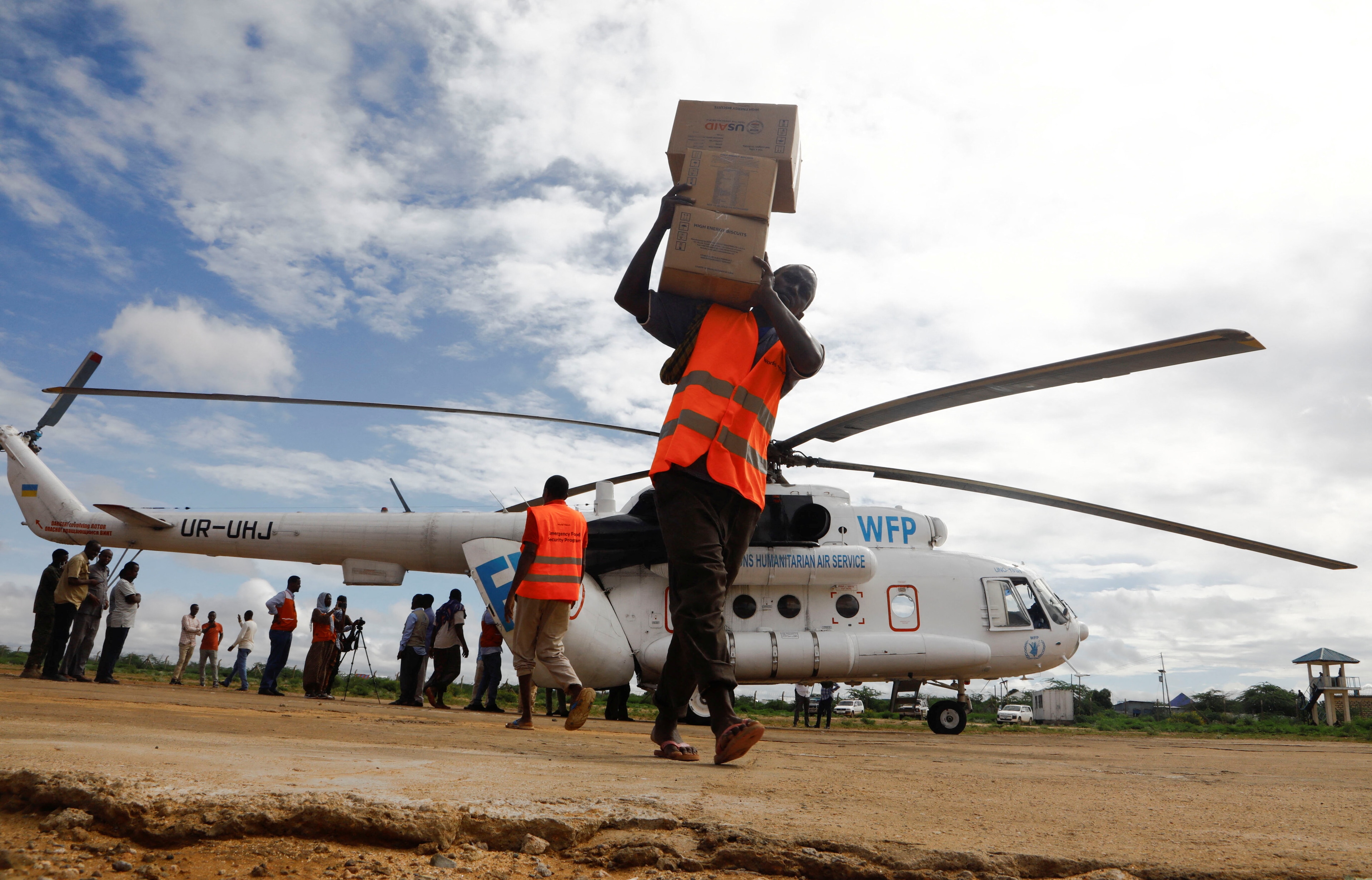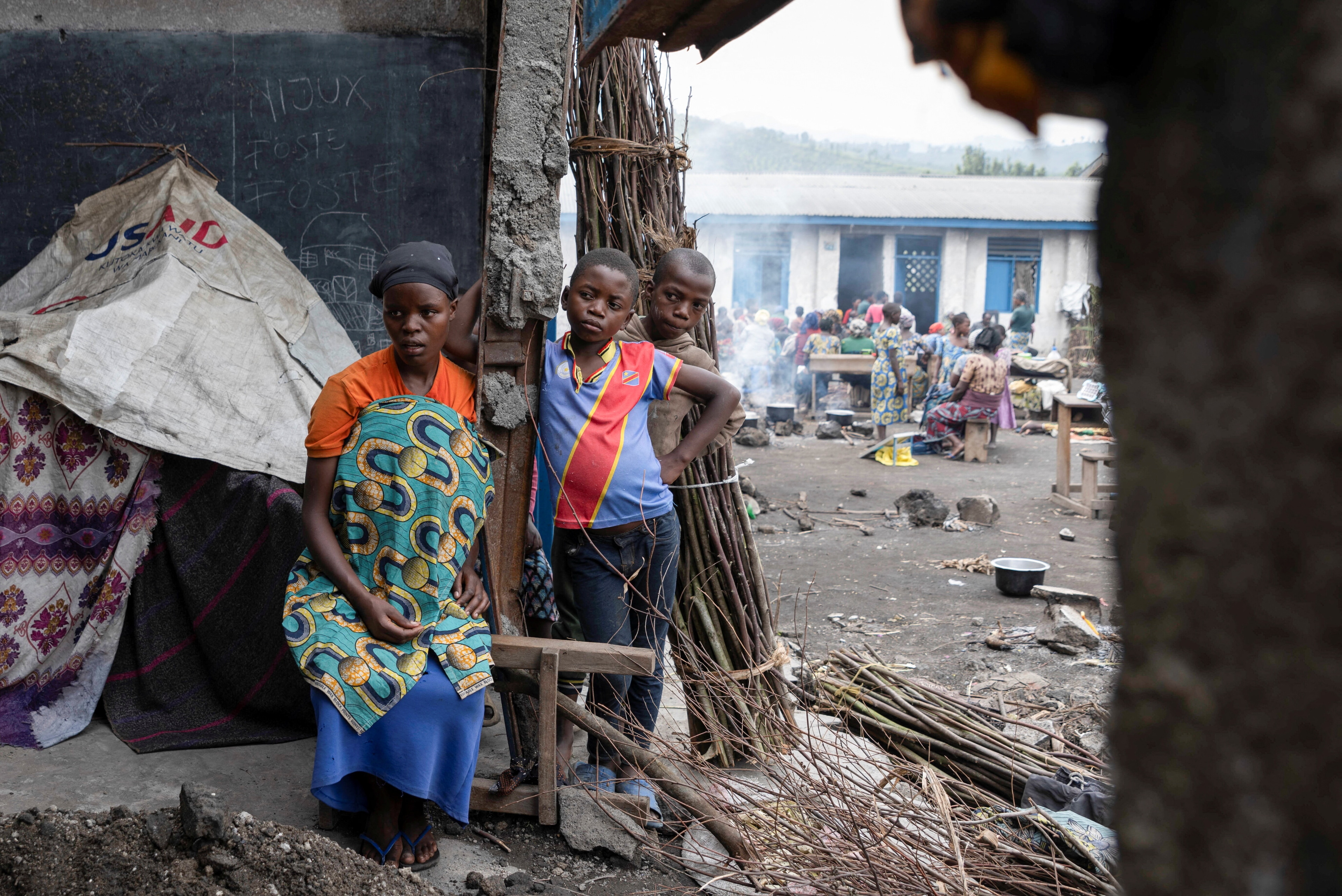The US and North Korea: a brief history
A look at the relationship between the United States and North Korea since the Cold War
Image: REUTERS/KCNA
Stay up to date:
United States
This article has been updated.
A planned summit between the United States and North Korea has been cancelled after US President Donald Trump withdrew.
In a letter to North Korean leader Kim Jong-un, Trump said: “Sadly, based on the tremendous anger and open hostility displayed in your most recent statement, I feel it would be inappropriate, at this time, to have this long-planned meeting.”
The decision came after North Korea threatened to pull out of what would have been the first meeting between a serving US president and North Korean leader, following what were seen as confrontational remarks by US officials.
Despite the tensions, North Korea responded to Trump's decision in conciliatory terms:
"We would like to make known to the US side once again that we have the intent to sit with the US side to solve problem(s) regardless of ways at any time,” said Kim Kye Gwan, a senior Foreign Ministry official.
A brief history
To those who lived and grew up during the Cold War era, the current tensions between North Korea and the US are a reminder that the conflicts of around 70 and more years ago have left legacies and enmities that have not yet gone away – and which still pose a real threat to world peace.
To begin to understand this complex relationship, you have to look back to the Korean War of 1950-1953 – a bloody conflict in which up to 3 million Koreans died, most of them in the north. About 58,000 US soldiers also lost their lives, as did 1 million Chinese and about 1,000 British troops.
The roots of conflict
Korea was liberated from 35 years of fractious and often harsh Japanese rule when the Second World War ended in 1945. While many Koreans wanted a self-governing state, much of the country’s prosperity had been built on the input of its old imperial rulers and by the time Japanese rule had ended Korea was the second-most industrialized nation in the region, after Japan.
But both the opportunities presented by the country’s industrial strength and its location on the borders of China and Japan – with whom the US wanted to build trade relationships after the war – and Russia’s desire to increase its “sphere of influence” meant that the hopes of a single, self-governed nation were not to be realized.
Late 1940s and early 1950s America, spooked by fears of communism, sought to contain what it saw as the threat of global communism, and this division led to Korea being split into two along the 38th parallel.
Effectively, North Korea became a Soviet-supported communist regime led by Kim Il-sung, grandfather of current ruler Kim Jong-un, while South Korea became a US-backed attempt at democracy under Syngman Rhee.
The road to a Cold War
Tensions were never far from the surface and various factions sought to unify the country. A widely accepted version of the story says that on June 25 1950, armed with Soviet weapons, North Korea crossed the 38th parallel border in an attempt to take over the whole territory.
However, it is probable that the eventual outbreak was the result of a gradual escalation of hostilities by both sides over time.
In 1950, with the Soviets boycotting the UN Security Council over a decision to exclude China from membership, Harry Truman, the US president, was able to secure a resolution to use force against North Korea and the war began.
In many ways this was the official start of the Cold War, in which the US and Russia used others to engage in conflicts because of fears that a direct war between the two sides would escalate to all-out nuclear war.
While both sides had the upper hand in the Korean dispute at various times – and it eventually dragged China in on the North’s side and the British and other UN member states on the South’s – the dispute ended in stalemate in July 1953.
Aftermath
The conflict was bloody, with the US carpet bombing its opponent’s cities and civilians with more than 635,000 tons of explosives, including 32,557 tons of napalm. By comparison, in the Second World War, it had used 503,000 tons in the South Pacific over a much larger area.
As well as setting the template for later Cold War tensions such as the Cuban Missile Crisis of 1962 and the Vietnam War of 1965-73, the Korean War left a visible divide between the two halves of Korea in the Demilitarized Zone, a heavily fenced and land-mined 4 kilometre separation strip guarded on both sides.
Following the armistice, the Republic of Korea, known as South Korea, and the Democratic People’s Republic of Korea, North Korea, were created. Both were officially admitted into the UN General Assembly in 1991.
But the conflict left feelings of anger and hatred on both sides as many families were forcibly separated, some never to be reunited, while in the North the blanket bombings of the Korean War and the imperialist Japanese rule are still sources of rancour.
As Robert E Kelly, a professor of political science at South Korea’s Pusan National University, told CNN: “The bombing is treated as the American original sin in the (North Korean) propaganda and it certainly was savage.
“It’s become a political tool to justify the permanent emergency state. Japanese colonization is used the same.”
Many North Koreans still view the US bombings as war crimes.
And the tensions remain
While the US, Japan and their allies helped to rebuild South Korea, the North turned to Russia, China and the nations in the Communist sphere of influence, which between them supplied almost 880 million roubles as well as manpower and technological input.
The result, according to historian Charles K Armstrong, was that: “In the late 1950s North Korea’s growth rate of total industrial output (averaging 39% between 1953 and 1960) was probably the highest in the world.”
But tensions, which even today run broadly on the lines established in the Cold War, have always kept the US and North Korea at loggerheads.
For the US, these have mostly been fueled by the North’s nuclear ambitions and its development of missile technology, both of which are alleged to have provided it with exports to states such as Iran and Syria.
However, these tensions have cooled recently, with talks between North and South and the planned - although now cancelled - talks with the US.
Some key events and dates in this US-North Korean relationship have included:
- 1985: The North joined the international Nuclear Non-Proliferation treaty, barring it from producing nuclear weapons, partly after coercion by Russia.
- 1993: The International Atomic Energy Agency accused the North of violating the treaty. The North fired a ballistic missile into the Sea of Japan.
- 1994: The North and the US sign the Agreed Framework and Pyongyang agreed to freeze its nuclear programme. This collapsed by the end of 2002.
- 1996: Severe famine in the North leads to an estimated 3 million deaths. The US provided food aid, most of it through non-government organizations.
- 1996: The North refuses to stick to the 1953 Korean War armistice and sends troops into the Demilitarized Zone.
- 1998: The North fires a ballistic rocket over Japan and into the Pacific, far beyond its weapons previously known capabilities.
- 2002: North and South wage a naval battle in the Yellow Sea.
- 2006: The North fires seven missiles and conducts its first underground nuclear weapons tests, As a result, the UN imposes economic sanctions.
- 2010: The North reportedly shows an eminent US scientist a secret uranium-enrichment facility.
- 2012: North Korea claims to have missiles that can reach the US after South Korea and the US agree to extend the range of the South’s missiles.
- 2013: The UN agrees fresh sanctions after a third nuclear test.
- 2016-17: North Korea continues a series of long-range missile tests.
- Early 2018: North Korean leader Kim Jong-un and US President Donald Trump exchange threats about their countries' nuclear capabilities.
- March 2018: Kim Jong-un and Donald Trump announce plans to meet.
- March 2018: Kim Jong-un recommits to denuclearisation during talks with Chinese President Xi Jinping in Beijing.
- April 2018: Kim Jong-un and South Korean President Moon Jae-in hold talks.
- May 2018: The scheduled meeting between Kim Jong-un and Donald Trump is cancelled by the US president.
While George W Bush described North Korea as part of an “axis of evil”, his successor, Barack Obama, kept up an attempt at dialogue mixed with sanctions.
Donald Trump, the current US president, has been critical of past efforts to engage with the regime and had taken a far less tolerant attitude to both North Korea and its ruler in the mainstream media and on Twitter.
Missile tests, some of which flew over Japan, a key US ally and a major global economy, were viewed as a deliberate provocation of the US, as were claims it now has missiles that can hit mainland America.
Thawing tensions
However, 2018 has seen a thawing of relations. North and South Korea athletes marched under a single flag during the Winter Olympics, while Kim Jong-un conducted his first foreign visit since assuming power. His visit to China included a reaffirmed commitment to denuclearisation.
His visit to the south and meeting with President Moon Jae-in was viewed as another significant step, as both parties made commitments to peace on the peninsula.
And despite the cancelled meeting between the North and the US, Kim Jong-un has said he's still willing to meet "at any time."
Don't miss any update on this topic
Create a free account and access your personalized content collection with our latest publications and analyses.
License and Republishing
World Economic Forum articles may be republished in accordance with the Creative Commons Attribution-NonCommercial-NoDerivatives 4.0 International Public License, and in accordance with our Terms of Use.
The views expressed in this article are those of the author alone and not the World Economic Forum.
Forum Stories newsletter
Bringing you weekly curated insights and analysis on the global issues that matter.
More on Resilience, Peace and SecuritySee all
Florian Krampe
July 31, 2025
Naoko Tochibayashi
July 28, 2025
Vanina Farber
July 21, 2025
Robert Piper
July 17, 2025
Resilience roundtable: How emerging markets can thrive amid geopolitical and geoeconomic uncertainty
Børge Brende, Bob Sternfels, Mohammed Al-Jadaan and Odile Françoise Renaud-Basso
July 9, 2025
Kate Whiting
June 19, 2025





